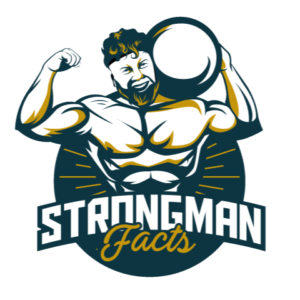Is a Strongman Stronger Than a Powerlifter?
Introduction
Powerlifting is a sport that measures strength by looking at athletes’ big three numbers – squat, bench and deadlift. Strongman events are more varied, and athletes have to score points to lead! It is quite common to hear questions like would a strongman win a powerlifter.
People that support the notion that powerlifters are stronger may laugh at strongman’s form or their hitching during deadlifts. But people who support strongman discredit the arches in powerlifters’ bench and sumo deadlifts. In this article, we are going to investigate whether strongman athletes are stronger than powerlifters.
What is the Difference Between a Powerlifter and a Strongman?
Powerlifters are known to use technique and develop a form that suits their physical attributes. For example, people with quad dominant legs tend to pull sumo deadlifts while people with stronger hamstring may be inclined to do conventional.
Arm placements during lifts are also carefully designed to maximize muscle activation for bigger lifts. Raw strength is not as valued in powerlifting as people tend to avoid injury as it can take an athlete out of training for weeks, which makes them lag behind their program (and progression).
Powerlifting competitions allow athletes to take 3 attempts to achieve their biggest lift in each event – squat, bench, deadlift. In other words, there are no reps in a competition. Apart from that, powerlifters also have rules and commands to adhere to.
- Squat depth: Hip crease is below top of the knee.
- Bench: Butt must be on the bench and feet are on the floor
- Deadlift lockout: No dropping the bar after lockout
Would a Strongman Be Able to Compete in Powerlifting Competitions?
Simple answer is yes! Absolutely! Strongman training regiments train the full body and strongmen have the brute force to execute moves. Powerlifting is rather simple with only three events and once an athlete follows the commands and fulfills the requirements to get 2 out of 3 white lights.
Strongman vs Powerlifter – A Case Of Thor
In 2017, Hafthor Bjornsonn did a powerlifting challenge with 5 weeks of preparation and got an impressive total of 1100kg! It was an impressive feat considering that powerlifters typically have longer preparation than 5 weeks and it was his first powerlifting venture!
People that followed Thor religiously may think this is not impressive since he has lifted heavier weights. Thor pulled 501kg in 2020, but he weighed 205kg at the time, while he weighed 197.5kg when he deadlifted 410kg in 2018. This is one thing to note about powerlifting – they care about weight classes, a lot. Total in a competition is important but the winner is the one with the highest Dots, which is a measurement of the total over body weight.
At the time, the IPF Powerlifting Champion was Ray Williams, who weighed 189.2kg and lifted 1083.5. According to the dots, Thor actually had higher Dots than Ray. However, Thor was in the “wraps” category while Ray did his competition “raw”. This is because Thor used knee wraps as opposed to knee sleeves. And when we investigate the wrap category of 2018, Thor was the top 98th powerlifting athlete on record. While this is certainly impressive as a debut, this also means a top strongman cannot immediately jump into powerlifting and dominate the charts.
Why Can’t Strongman Athletes Immediately Dominate Powerlifters?
There are multiple reasons to that. Hitting depth in the squat event of powerlifting can be challenging for those with less mobility or knee health. When we look at squat videos of strongmen, a majority of the strongmen did not hit depth during training or competitions.
During deadlift, strongmen are known to use hitching as a technique to get the bar up as well. While hitching 500kg is no easy feat, in powerlifting it is considered a banned move or “no lift”. Powerlifters can also do sumo deadlifts in a competition, while strongman banned sumo! Strongmen often use knee straps as opposed to knee sleeves as well, which puts them in the “wraps” category and receive less attention than the “raw” category.

While strongman trains full body and guarantee athletes to have all-rounded functional strength, powerlifters train to perfect the big 3. This means that powerlifters put more emphasis in training legs and chest.
It is not unseen in powerlifting programs that the shoulders are completely ignored for 12 weeks straight. In other words, powerlifters use all their time in training to be efficient and effective in the big 3. Any random athlete coming in to compete in a powerlifting competition will realize that powerlifters spend so much time honing their skills and understanding the physics of their body. Strongmen would need time to adjust their technique and rely less on equipment to be on the powerlifting radar.
Conclusion
The article seemed pessimistic in strongmen developing in the powerlifting world. But that is not the central message! It is a common saying that a strongman can always be a powerlifter but not every powerlifter can become a strongman. Similarly, if you look at upper body and lower back strength, it is indisputable that strongmen are just superior to powerlifters.
However, comparing strongman to powerlifting is like comparing short-distance runners to long-distance ones. Their training regiment may be similar and their competition may seem “interchangeable” but only a few athletes can excel in both!



